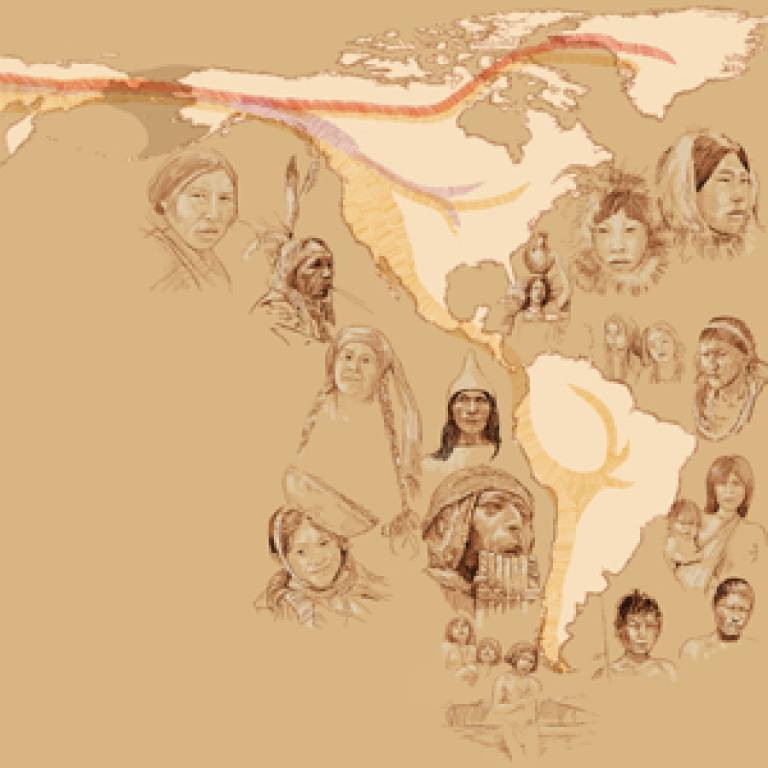For centuries, the question of Where Did Indians Come From has captivated historians, anthropologists, and the general public alike. Now, cutting-edge genetic research is providing fascinating answers, painting a detailed picture of the origins and migrations of Native American populations across the Americas. A groundbreaking study published in Nature reveals that Native Americans, from Canada down to the tip of South America, are primarily descended from a single migration wave that occurred over 15,000 years ago, with subsequent migrations adding to the rich tapestry of their genetic heritage.
 nativeamerican
nativeamerican
This pivotal first migration involved a group known as the First Americans, who bravely crossed Beringia, an ancient land bridge connecting Asia and America during the Ice Age. This land bridge served as a crucial gateway, allowing humans to traverse from the Asian continent into the vast, unexplored lands of the Americas.
The Three Migrations Theory: A Genetic Deep Dive
To understand the complex origins of Native Americans, an international team of scientists undertook the most comprehensive genetic study of Native American populations to date. By meticulously analyzing variations in DNA sequences from 52 Native American and 17 Siberian groups, researchers identified more than 300,000 specific DNA sequence variations. This extensive genetic data allowed them to trace patterns of genetic similarities and differences, effectively illuminating the intricate history of population movements across the Americas.
Professor Andres Ruiz-Linares from UCL Genetics, Evolution and Environment, who spearheaded the study, stated, “For years it has been debated whether the Americas were settled through a single or multiple migrations from Siberia. Our research definitively settles this debate: Native Americans do not originate from a singular migration event. Furthermore, our findings begin to shed light on the patterns of human dispersal within the Americas.”
The Dominance of the First American Migration
The study’s findings underscore the overwhelming influence of the initial migration. While two later migrations did occur, their genetic contributions are largely confined to specific regions. These subsequent migrations primarily impacted Arctic populations speaking Eskimo-Aleut languages and the Canadian Chipewyan, speakers of the Na-Dene language.
However, it’s crucial to note that even these groups primarily trace their genetic ancestry back to the First American migration. Eskimo-Aleut speakers inherit over 50% of their DNA from the First Americans, while the Chipewyan derive approximately 90%. This demonstrates that the later migration waves interacted and mixed with the already established First American populations they encountered upon arriving in North America.
Professor David Reich, a co-author of the study and geneticist at Harvard Medical School, elaborated on this, stating, “There are at least three distinct lineages within Native American populations. The Asian lineage leading to the First Americans is the most anciently diverged. In contrast, the Asian lineages that contributed a portion of the DNA to Eskimo-Aleut speakers and the Na-Dene-speaking Chipewyan from Canada are more closely related to present-day East Asian populations.”
Coastal Route and Genetic Divergence
Once in the Americas, the population expanded southward, primarily following a coastal route. As groups moved further south, populations branched off, leading to genetic divergence over time. Remarkably, the study revealed limited gene flow between different Native American groups after this initial dispersal, especially in South America. This suggests that once populations became established in different regions, they remained relatively isolated from one another.
Unveiling Unexpected Migration Patterns
Despite the general southward coastal migration pattern, the research uncovered two notable exceptions. Firstly, Chibchan-speakers in Central America exhibit genetic links to both North and South America. This suggests a back-migration from South America and a mixing of distinct Native American ancestral lines in Central America.
Secondly, the Naukan and coastal Chukchi populations in northeastern Siberia were found to carry ‘First American’ DNA. This surprising finding indicates a migration back to Asia by Eskimo-Aleut speakers, carrying Native American genes back across the Bering Strait region.
Overcoming the Challenges of Genetic Mixing
Analyzing Native American DNA presents unique challenges due to the extensive genetic mixing that occurred following European and African immigration after 1492. To address this complexity, the researchers developed innovative methods to isolate and focus on the sections of the genome that were exclusively of Native American origin.
Professor Ruiz-Linares emphasized the technical difficulties, stating, “The study of Native American populations is technically very challenging due to the widespread occurrence of European and African mixture in Native American groups.”
Professor Reich further explained the solution, “We developed a technique to peel back this genetic mixture, allowing us to investigate the relationships among Native Americans before the arrival of Europeans and Africans. This breakthrough enabled us to study the history of a significantly larger number of Native American populations than previously possible.”
A Collaborative Effort
The sheer scale and diversity of DNA samples required for this study necessitated a global collaborative effort. Sixty-four researchers from across the Americas, Europe, and Russia joined forces to contribute to this landmark research, highlighting the international cooperation needed to unravel the complex history of human migration and origins.
This comprehensive genetic study provides compelling answers to the long-standing question of where did Indians come from. It confirms the Beringia land bridge as the primary entry point and reveals a more nuanced history of multiple migrations and intricate dispersal patterns across the Americas, enriching our understanding of the peopling of the New World.
